- Building a 3D Digital Clock with ArduinoPosted 4 months ago
- Creating a controller for Minecraft with realistic body movements using ArduinoPosted 5 months ago
- Snowflake with ArduinoPosted 5 months ago
- Holographic Christmas TreePosted 6 months ago
- Segstick: Build Your Own Self-Balancing Vehicle in Just 2 Days with ArduinoPosted 6 months ago
- ZSWatch: An Open-Source Smartwatch Project Based on the Zephyr Operating SystemPosted 7 months ago
- What is IoT and which devices to usePosted 7 months ago
- Maker Faire Rome Unveils Thrilling “Padel Smash Future” Pavilion for Sports EnthusiastsPosted 8 months ago
- Make your curtains smartPosted 8 months ago
- Configuring an ESP8266 for Battery PowerPosted 8 months ago
GSM Module – SIM900
This is a GSM/GPRS-compatible Quad-band cell phone, which works on a frequency of 850/900/1800/1900MHz and which can be used not only to access the Internet, but also for oral communication (provided that it is connected to a microphone and a small loud speaker) and for SMSs. Externally, it looks like a big package (0.94 inches x 0.94 inches x 0.12 inches) with L-shaped contacts on four sides so that they can be soldered both on the side and at the bottom. Internally, the module is managed by an AMR926EJ-S processor, which controls phone communication, data communication (through an integrated TCP/IP stack), and (through an UART and a TTL serial interface) the communication with the circuit interfaced with the cell phone itself.
The processor is also in charge of a SIM card (3 or 1,8 V) which needs to be attached to the outer wall of the module.
In addition, the GSM900 device integrates an analog interface, an A/D converter, an RTC, an SPI bus, an I²C, and a PWM module. The radio section is GSM phase 2/2+ compatible and is either class 4 (2 W) at 850/ 900 MHz or class 1 (1 W) at 1800/1900 MHz.
The TTL serial interface is in charge not only of communicating all the data relative to the SMS already received and those that come in during TCP/IP sessions in GPRS (the data-rate is determined by GPRS class 10: max. 85,6 kbps), but also of receiving the circuit commands (in our case, coming from the PIC governing the remote control) that can be either AT standard or AT-enhanced SIMCom type.
The module is supplied with continuous energy (between 3.4 and 4.5 V) and absorbs a maximum of 0.8 A during transmission.
Pinout SIM900




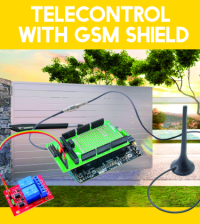

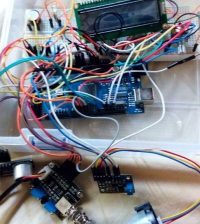







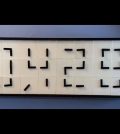
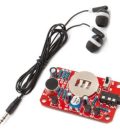
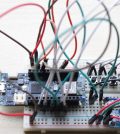
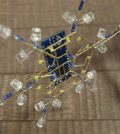
Pingback: TiDiGino Contest | Open Electronics